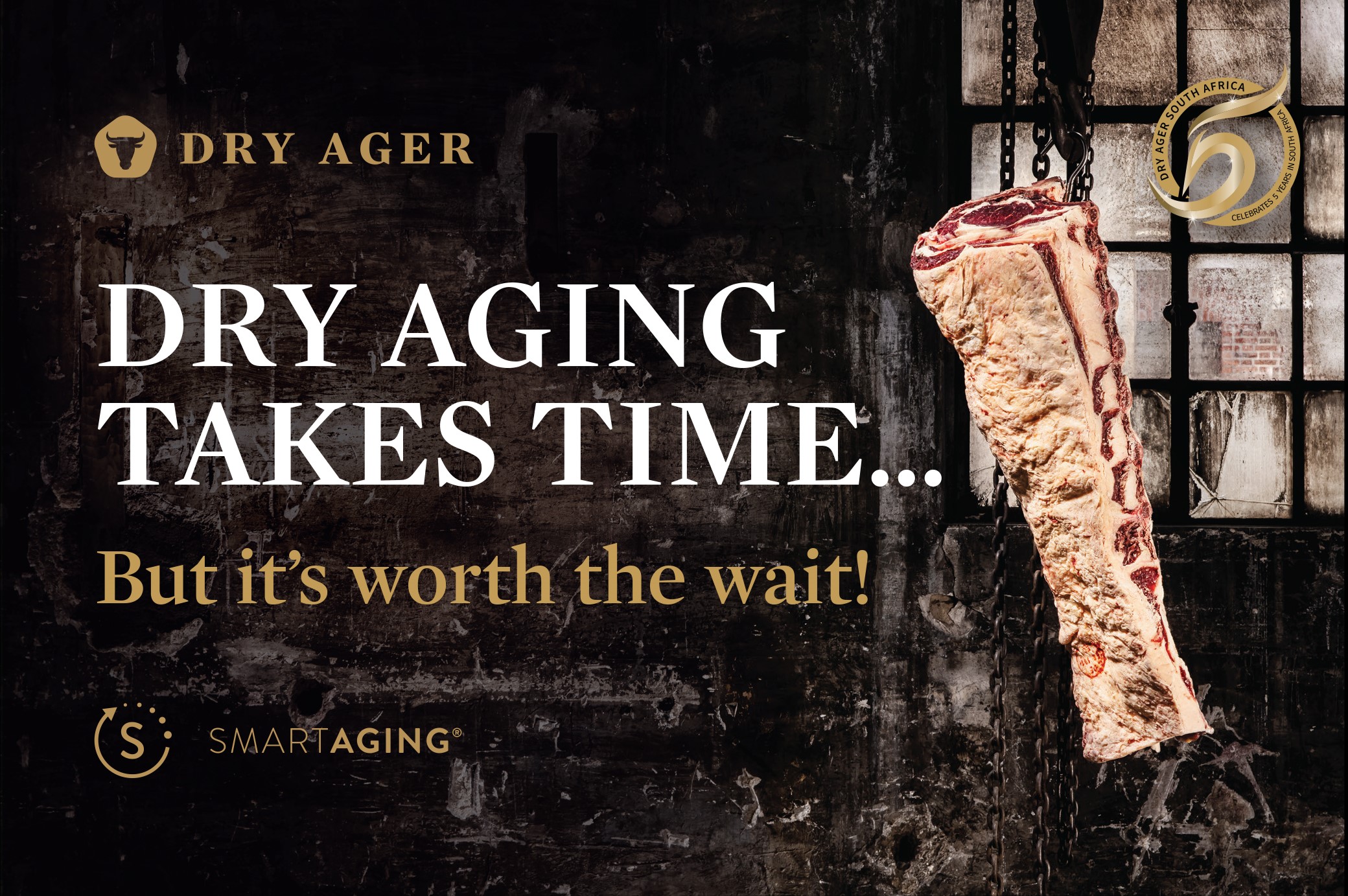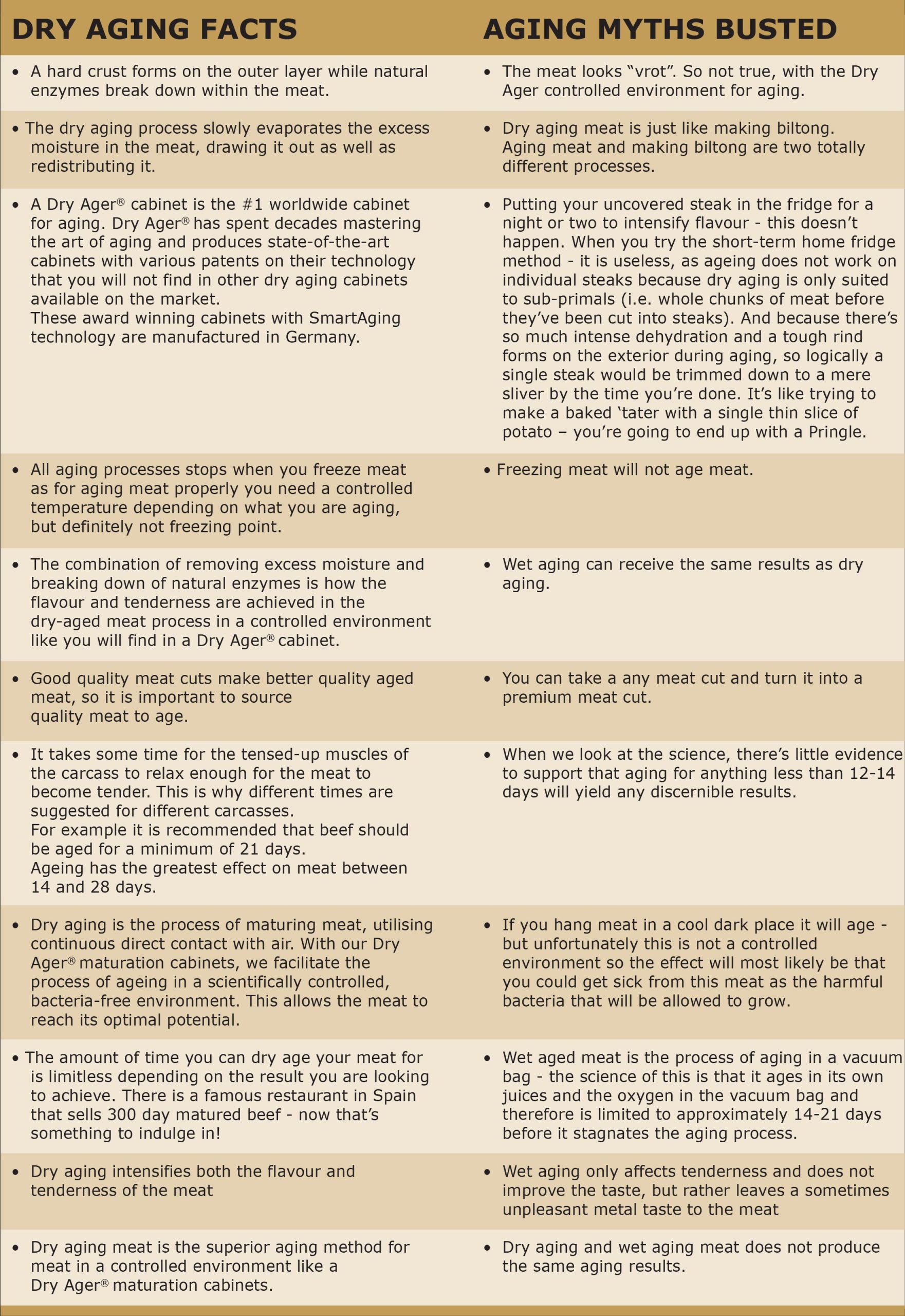There is so much available to read on the internet these days but that saying “don’t believe everything you see on the internet” is very true about the information available about aging meat, so I would like to share some of my knowledge with you.


PART 15: Let’s Reveal The Facts And The Myths About Dry Aging With Chris Fourie
Aging meat to take it to the next level The Facts vs The Myths!

Why do we age meat at all?
Aging is the process to improve two major meat characteristics
Firstly aging improves the taste, and secondly it increases the tenderness. As unpleasant as this may sound, it’s rather simple… the process of aging meat is essentially carefully controlled decomposition of the carcass.
In fact, tenderness is such an important quality for steaks that the meat industry has developed a method for measuring and assessing the texture characteristics of meat known as the Warner-Bratzler shear force test (kind of like how chilis are measured in Scoville units).
Did you know? Even the meat you buy at the grocery store has undergone at least 7-10 days of aging? It’s an industry-wide consensus that beef aged for at least this long is significantly better than
freshly-slaughtered product, which ironically can taste “less-beefy” and highly metallic.
In the 1960s vacuum sealers were invented, but until then meat was hung on hooks in cooling units for weeks and sold as “well hung” cuts. This process, although considered “authentic meat maturation” unless it is controlled properly it can result in hazardous and unhygienic conditions – so this is where the inspiration was born for the Landig family in Germany to ‘dig deeper’ into the process of aging meat and study it under various conditions, ultimately resulting in the development of he Dry Ager cabinets that now boast being the #1 worldwide aging cabinets.

Let’s recap on the basic differences between wet and dry aging meat...
THE PROCESS OF WET AGEING
Wet aging is the far more commonly practiced process for aging meat. The term ‘wet aging’ refers to a product that is vacuum packed, and therefore ‘wet’ from sitting in it‘s own juices.
So think about it, any piece of vacuum sealed meat you see is technically being wet aged. This process is a faster process than dry and is obviously cheaper, because all you really need is a vacuum sealable bag. With this method of aging you don’t lose any of the product to shrinkage.
Wet aged meat can have a pale and unappealing appearance when you first remove it from the bag, but after exposure to air, oxymyoglobin forms, and the meat will start to return to a reddish colour. The disadvantage to wet aging is that because the product sits in its own ‘juices’, it retains a strong minerally/serum(y)/metallic taste. Technically speaking these ‘juices’ are not blood, but rather a mix of water and myoglobin.
THE PROCESS OF DRY AGING
Dry aging is where we expose the naked meat carcass to a carefully controlled environment with precise temperature and relative humidity levels. This ultimately increase in tenderness, and also the flavour of the meat is altered during this process because of a combination of healthy bacteria, enzyme breakdown and oxidation. It is also said that the loss of moisture also adds to the flavour.
Dry aging however requires expensive refrigeration equipment, plus with the moisture loss and the surfaces which are exposed to air which develop a dark and dry appearance that must be cut away before cooking results in reduction of the initial weight of the meat placed in the aging equipment so it therefore becomes more expensive per kilogram.
So keep in mind, should you ever have a particularly funky-tasting dry aged meat cut, it may be because the outer layers were not trimmed back far enough.

Keep a look out for Part 16 on 31 January 2024 where we will discuss how long to dry age venison and other meats.
Copyright 2024 | All Rights Reserved | Powered by WILD & JAG / GAME & HUNT

